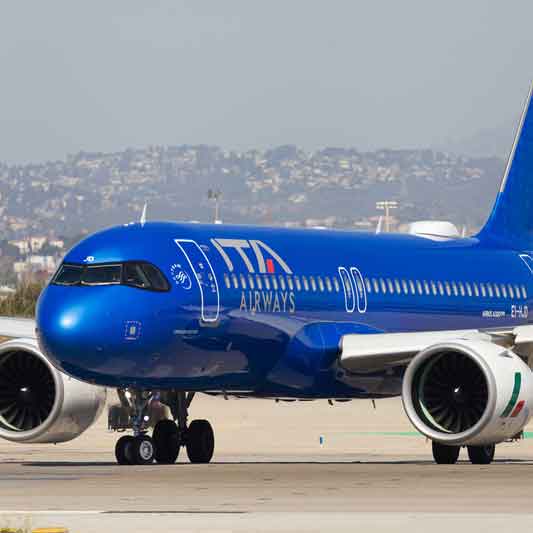On Saturday, September 14, 2024, an off-duty, 57-year-old flight attendant and mother of three, Gabriella Cario, died suddenly while preparing to board an ITA Airways flight at Reggio Calabria Airport in Italy. Even though Cario felt sick at the gate, she opted not to seek medical help, preferring to focus on her need to return home to her loved ones in Rome.
Reports suggest that Cario looked noticeably unwell but remained determined to carry on with her journey. Her condition worsened on ITA Airways flight 1156, leading her to collapse onboard, causing shock among passengers and crew. Despite immediate medical attention from paramedics, Cario could not be resuscitated. The specific cause of her death is yet to be determined, with preliminary reports indicating a sudden illness.
Residing in Sabaudia, Cario was a well-liked figure in her local community. Paying tribute to her, Sabaudia’s Mayor Alberto Mosca expressed his profound grief, stating, “I knew Gabriella. She was a bright, always-smiling, and kind woman. On behalf of the administration and the entire community, I extend our heartfelt condolences to her husband and her beloved three children.”
In-flight medical emergencies are more common than one might think. It’s estimated that approximately one out of every 604 flights will encounter a medical emergency. These incidents typically involve fainting, stomach issues, or cardiovascular symptoms. Flight crews are equipped with medical kits and automated external defibrillators (AEDs) and can consult with ground-based medical professionals. However, the dynamics of air travel can make handling these emergencies particularly difficult.
Throughout 2024, a number of in-flight medical emergencies have made international headlines. In January, a passenger on a Jet2 flight from Tenerife, Spain, to Manchester, England, was found unresponsive in the restroom and was later declared dead. In February, a man suffered severe nose and mouth bleeding onboard a Lufthansa flight to Munich, Germany, necessitating an emergency landing back in Bangkok, but he unfortunately died on the plane. Later that month, a 41-year-old woman had a seizure on a flight from Punta Cana, Dominican Republic to Charlotte, North Carolina, and despite an emergency diversion, she later died in a hospital.
In Cario’s case, her collapse occurred while the plane was still on the ground, which allowed for relatively quick medical intervention. However, despite the quick response, her life could not be saved.
While there are established protocols in place for handling in-flight medical emergencies, they are not infallible. Airlines are constantly striving to improve their response measures, with many now participating in initiatives like Doctors on Board, which aims to identify passenger medical professionals who can assist during emergencies.

